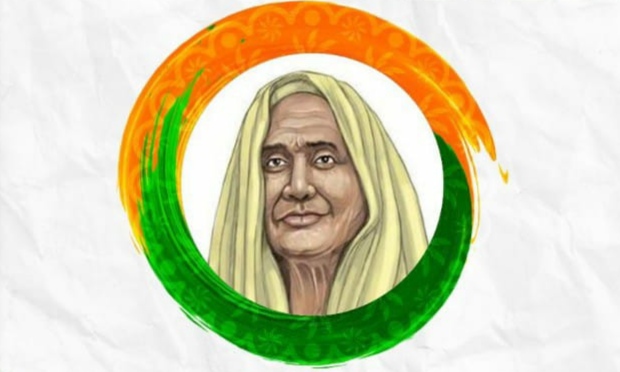Matangini Hazra, fondly known as “Gandhi Buri” (Old Lady Gandhi), is one of the most iconic yet under-celebrated freedom fighters in India’s long battle against British colonial rule.
Born in a humble household in West Bengal, she rose to prominence due to her undying spirit, fearless attitude, and relentless fight for justice and independence.
This is the story of a woman who defied age, gender, and oppressive rulers to become a symbol of courage and sacrifice.
Early Life and Background
Matangini Hazra was born on October 19, 1870, in the village of Hogla near Tamluk in the Midnapore district of West Bengal. Coming from a poor peasant family, her access to formal education was limited. She was married at the age of 12 to Trilochan Hazra, a widower much older than her. Unfortunately, she was widowed at an early age and had no children. These personal hardships, however, did not deter her from taking an active role in public service.
Rise as a Freedom Fighter
Hazra was inspired by Mahatma Gandhi’s principles of nonviolence and civil disobedience. She became actively involved in the Indian independence movement during the Salt March in 1930. Even in her 60s, she participated in protests, boycotts, and picketing of shops selling foreign goods.
She was arrested several times by British authorities but refused to be cowed. Her participation in the Quit India Movement in 1942 was particularly significant and led to her ultimate martyrdom.
The Ultimate Sacrifice
On September 29, 1942, during the Quit India Movement, Hazra led a procession of over 6,000 supporters to seize the Tamluk police station. Despite orders from the British to stop, Hazra marched on, holding the Indian national flag and chanting slogans. The police opened fire on the crowd. Matangini was shot three times, but even as she fell, she continued to shout “Vande Mataram” and held the flag high.
She died on the spot, becoming a martyr and a legend. Her death was a turning point in the Midnapore district’s role in the freedom struggle.
Legacy
- Several schools, streets, and statues have been named after her.
- Her statue stands proudly in Kolkata, near the Maidan, one of the few statues dedicated to a woman freedom fighter.
- The Indian government has honored her bravery by issuing postage stamps in her name.
- She has become a symbol of women’s empowerment and patriotic zeal in Indian history.
Lesser-Known Facts About Matangini Hazra
- She was affectionately called “Gandhi Buri” because of her adherence to Gandhian principles and her age.
- Hazra had no formal education but possessed an extraordinary understanding of political affairs.
- She led multiple protests and courted arrest willingly to defy British rule.
- Even after being wounded, she held onto the national flag until her last breath.
Inspiration for Future Generations
Matangini Hazra’s life is a source of immense inspiration. In a time when women were largely confined to their homes, she broke barriers and took leadership roles in public protests. She proved that patriotism knows no age or gender. Her sacrifice reminds us that the freedom we enjoy today is a result of the efforts and lives of countless unsung heroes like her.
FAQs
Q1. Who was Matangini Hazra?
Matangini Hazra was an Indian freedom fighter from West Bengal who actively participated in the Quit India Movement and was martyred in 1942.
Q2. What is Matangini Hazra known for?
She is known for leading a protest during the Quit India Movement where she was shot by British police while holding the Indian flag.
Q3. Why is she called Gandhi Buri?
She was called Gandhi Buri (Old Lady Gandhi) due to her dedication to Gandhian principles and her old age during the freedom struggle.
Q4. When and where was Matangini Hazra born?
She was born on October 19, 1870, in the village of Hogla, near Tamluk in West Bengal.
Q5. How did Matangini Hazra die?
She was shot dead by British police during a protest march in 1942 while leading a crowd of protesters.
Conclusion
Matangini Hazra’s story is one of unwavering courage, resilience, and devotion to the motherland. Despite the challenges of age, poverty, and oppression, she stood firm against colonial rule and gave her life for India’s freedom. As we commemorate her contribution, let us also reflect on the values she stood for — patriotism, justice, and selfless service.





